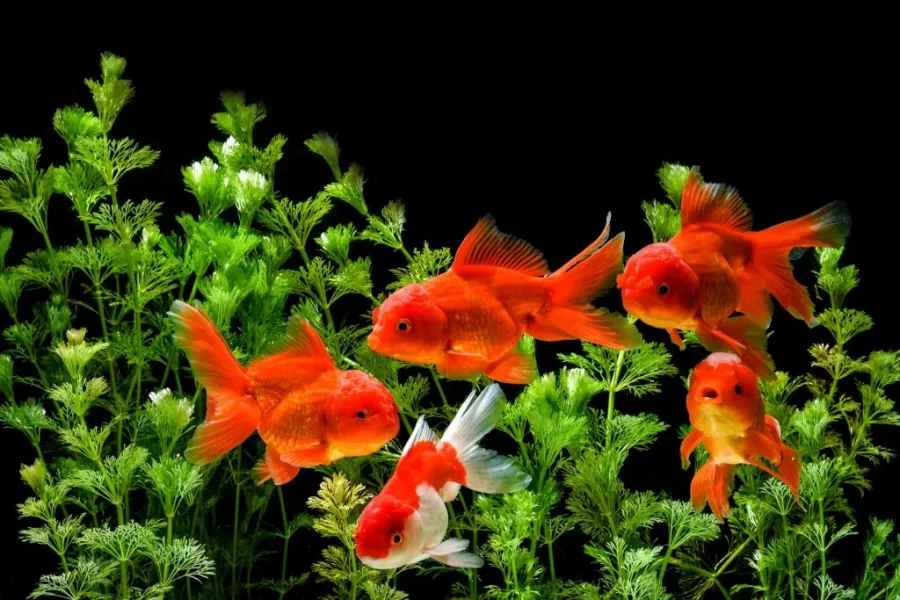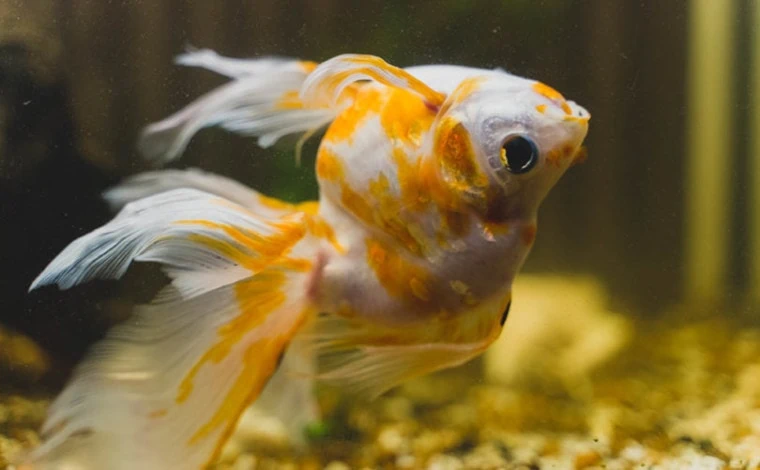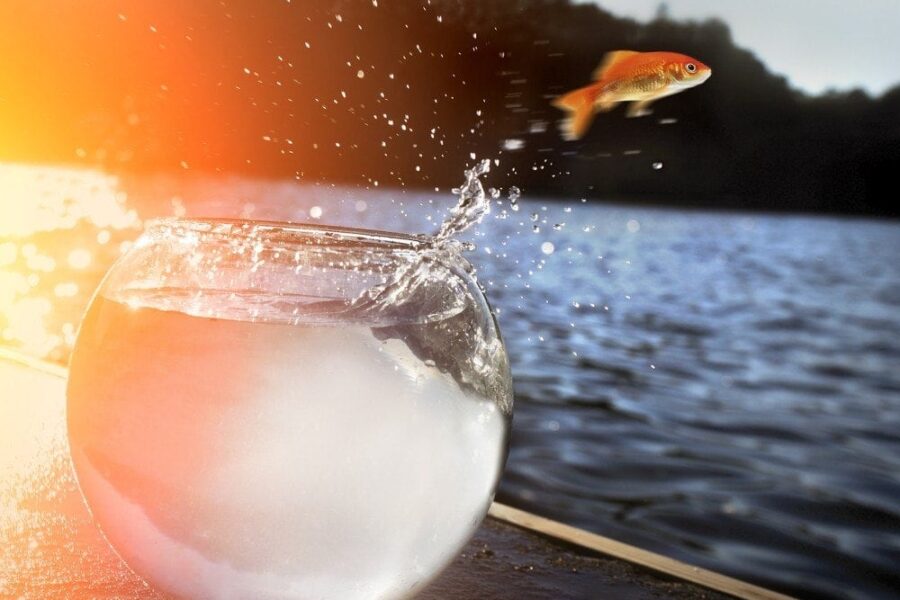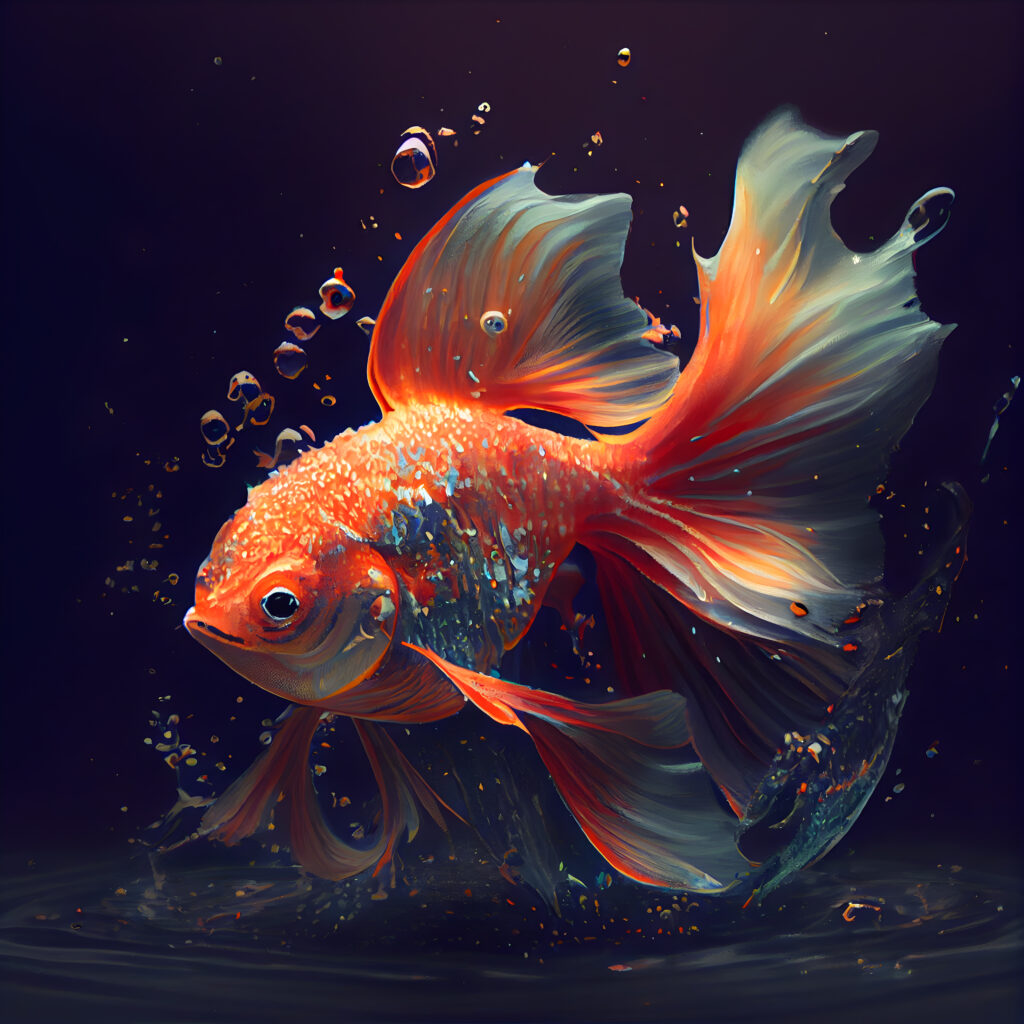
Have you ever found yourself pondering what is the best foods for your goldfish? Your buddies may not be able to tell you directly, but that’s what we’re here for! Welcome to our easy-to-read, fun-filled guide on the best foods for your goldfish.
Get ready to roll up your sleeves and swap your human chef hat for an aquatic one. It’s time to delve into the delicious world of goldfish cuisine. From flakes to pellets, our guide is like a friendly heart-to-heart about your goldfish’s gourmet preferences. Let’s get started!”
Importance of a Well-Balanced Diet for Goldfish
No pun intended, but a healthy goldfish is worth its weight in gold. Offering a well-balanced diet to your goldfish is one of the most consequential actions you can take for their health. A nutritious diet can strengthen their immune system, support growth, enhance colors, and reduce disease susceptibility. More so, the right kind of food ensures your goldfish’s fins stay buoyant, their scales glitter, and their breath— well, who are we kidding? They’re fish! In any case, a proper diet will keep your goldfish feeling fantastic.
As we unearth the importance of a balanced diet, let’s throw more light on why providing your goldfish with the right diet can help them live a longer, happier life, far away from those dismal “three-second” flashbacks.
Dispelling the Myth of Goldfish Memory Linked to Food
Here’s a fishy fact to amuse you. Did you know goldfish have an impressive memory span? Research shows they can remember things for up to five months! Yes, you read that right, your goldfish probably remembers what you fed them yesterday and might be giving you a side-eye for that questionable flake you dropped in this morning (psych, they don’t have eyelids!). So, let’s forget about those fishy fables and focus on creating a menu that’s worthy to linger in Goldie’s long-term memory.
Now that we’ve debunked the myth, and emphasized the role of diet in a goldfish’s life, it’s time to dive deeper—this time, into the very core of a goldfish’s dietary regimen. Up next: the nutritional needs. Teaser alert: it involves more than just breadcrumbs and love.
Understanding Goldfish Nutrition

Throwing a few flakes of food into your goldfish’s tank and calling it a day isn’t going to cut it for these vibrant and energetic creatures. Just like your hipster coworker who thrives on avocado toasts and almond milk lattes, goldfish too, have some specific dietary requirements that need to be met in order for them to lead happy, healthy lives.
The Nutritional Needs of a Goldfish
Contrary to what Joey from Friends might believe, goldfish can’t live on beer! Their diet needs to be a blend of proteins, carbohydrates, fats, vitamins, and minerals. Proteins help in cell repair and growth. Carbohydrates provide essential energy. Fats contribute to overall well-being while also supplying energy. Meanwhile, vitamins and minerals are instrumental in promoting good health and maintaining metabolic functions. Think of it as Goldfish’s multi-vitamin – minus the dreadful swallowing part.
The Role of Protein in a Goldfish Diet

Protein is the bodybuilder at the goldfish food party. It’s the Arnold Schwarzenegger of nutrition. Essentially, proteins are goldfish growth promoters. Goldfish have been known to benchpress small aquatic plants after a high-protein meal. Kidding. But seriously, it aids in tissue growth and repair, and it’s particularly significant in young, growing goldfish and breeding adults. Your goldfish needs protein to pump up, bro… or sis.
Understanding Different Types of Goldfish and Their Unique Dietary Requirements
Now, remember, not all goldfish are created equal. Each type has its own holy grail of a diet. There are over a hundred varieties of goldfish! From the ordinary commons and comets who are basically the ‘every fish’ of the goldfish world and can survive on a variety of diets, to the fancy swimsuit models like Orandas and Ranchus that have higher protein needs and enjoy a Class ‘A’ gourmet diet. It’s like a fancy Parisian dinner inside your aquarium.
Before you blank out, do remember that understanding your goldfish’s unique dietary needs can be the difference between a flourishing aquatic life and an ennui stomach flip. Learning about their specific dietary needs is like eavesdropping at a goldfish dinner party. Too much ‘ooh la la’ and too little ‘nom nom’ – a little balance is what we all seek!
Join me as we move ahead and dive deeper (pun intended) into the specific types of grub that can satisfy your goldfish’s insatiable appetite, while also keeping them chirpy and healthy in the next section.
The Best Types of Foods for Goldfish

Alright, buckle in folks! We’re about to kick off a culinary tour that might just leave you seeing your goldfish’s dinner from a whole new perspective.
Flakes: Benefits and Drawbacks
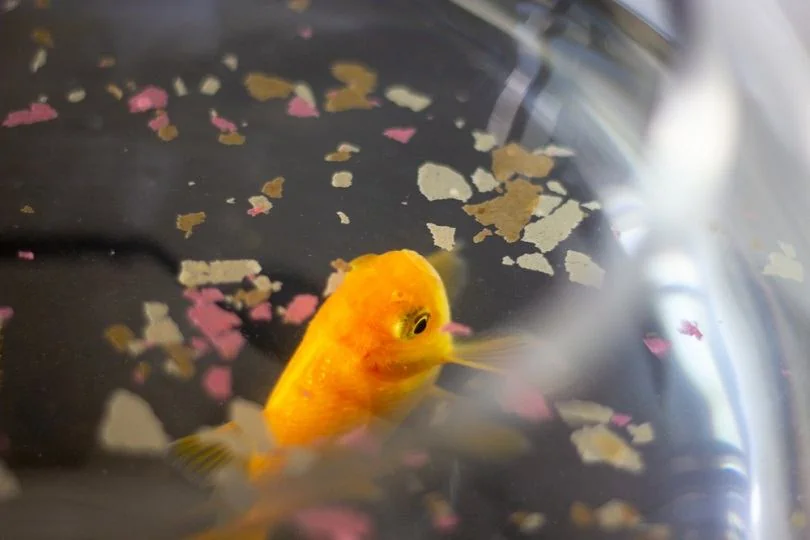
Think of flakes as the fast-food of the goldfish world. They’re convenient, easy to manage, and goldfish absolutely love them. They contain a blend of proteins, carbs, fats and fiber necessary for overall health. Plus, they float on the surface of the water, which allows your goldfish to feed in their natural position.
However, there’s always a catch. Flakes can quickly pollute the tank water if not eaten right away, leading to poor water conditions. Meal consistency can also vary due to flake size, which can impact nutritional intake.
After this tasty tidbit, you’re probably wondering, “Am I feeding my goldfish junk? Are there healthier options out there?” Well, my piscine-pampering friends, let’s sink our teeth into the next segment!
Pellets: Benefits and Drawbacks
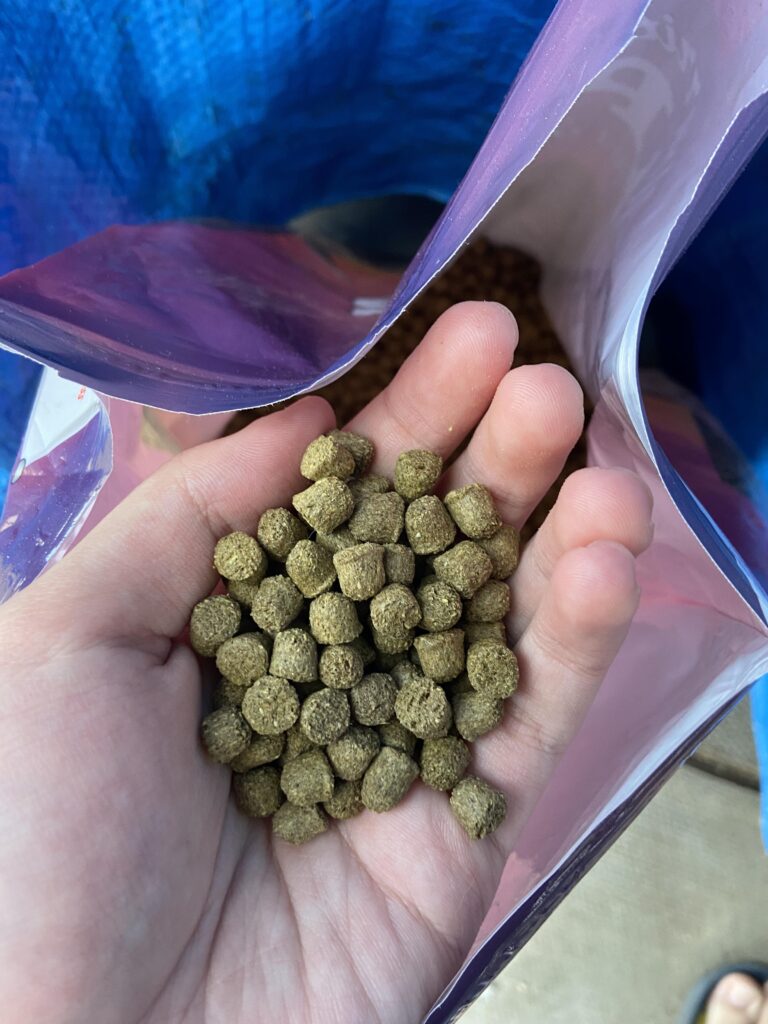
When it comes to goldfish grub, pellets are like the pre-packaged, microwaveable meal. A little bit better than fast food, but still a long way from gourmet. Pellets sink, which helps prevent fish from swallowing too much air when feeding. Goldfish tend to get floaty or “flip-over” problems due to air ingestion. Also, they’re less likely to dirty the tank.
That said, because pellets sink, slow feeders often miss out and the uneaten food can foul your tank. Some cheaper brands can also lead to constipation.
Are you getting finicky about the fast-food vibe of flakes and pellets? Fancy a fresh, organic, farm-to-tank approach? Brace yourself for our next option.
Live Food: Benefits and Potential Risks

Delving into the organic aisle, live foods like brine shrimp, daphnia, and bloodworms offer notable benefits. They provide enrichment, stimulate natural hunting behavior, and offer a good source of protein. But remember, they should complement their diet, not be the diet.
The downside? These wiggly morsels can carry parasites or diseases if not sourced from a reputable place. They also require more work: you either culture them yourself or store them properly to keep them alive.
What’s that I hear? You’re craving some greens? Me too!
Vegetables: Why Veggies Are Important?
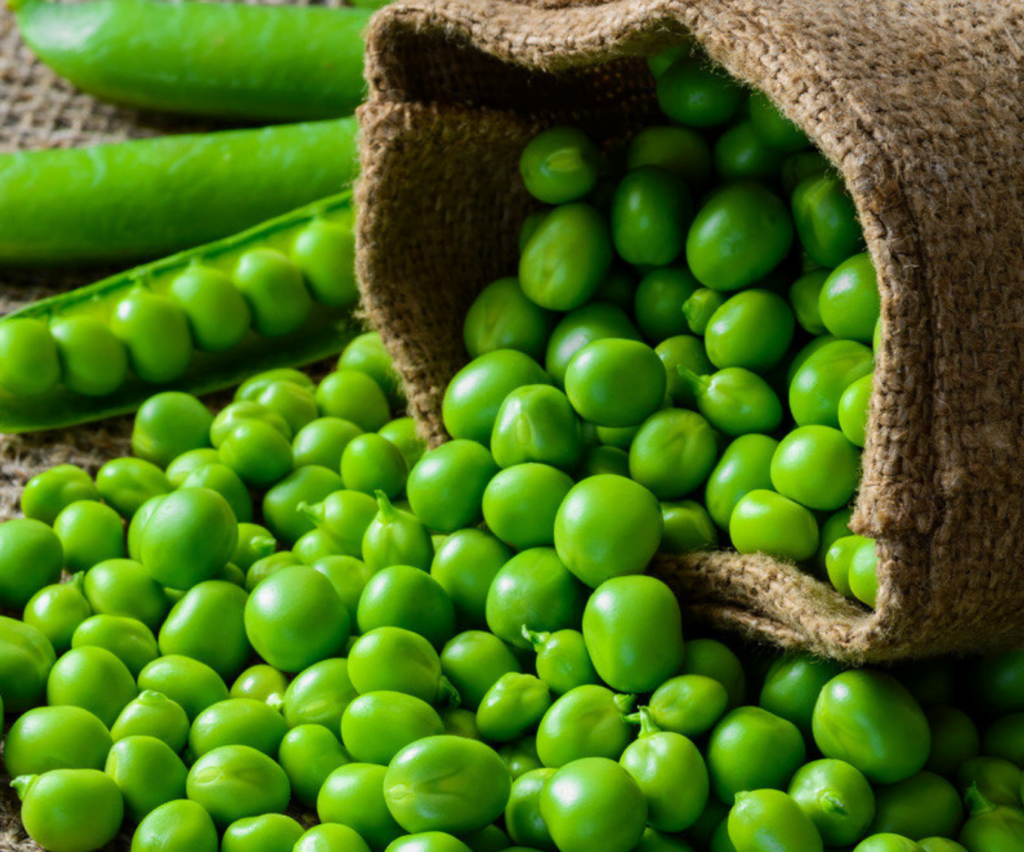
Like humans, goldfish benefit from a green diet. Veggies like peas, lettuce, zucchini, and spinach offer fiber which aids digestion and can help prevent swim bladder issues.
The con is simply preparation. Vegetables must be cooked, peeled, and cut into suitable pieces.
You’ve sat through some crunch, let’s wrap up with a slice of delight – gel foods.
Gel Foods: An Emerging Good Choice
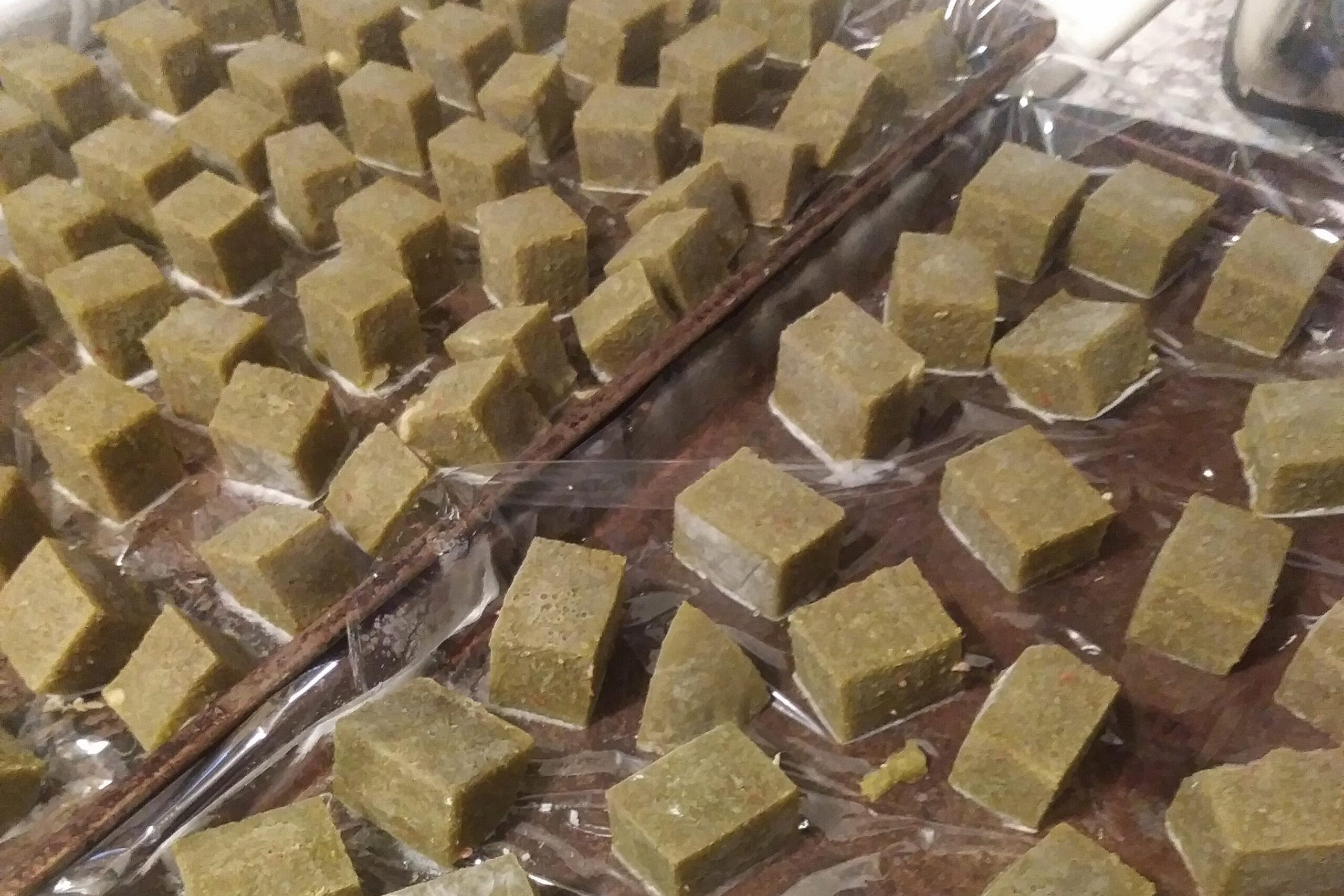
Consider gel foods as the artisanal farm-to-table option in goldfish cuisine. Made from fresh ingredients, and often boasting organic and non-GMO labels, they offer a balanced diet with a consistency that’s kind to goldfish digestion.
The drawbacks? They can be pricier and require additional preparation time. And while your fish may enjoy this gourmet delight, some owners might find it less convenient.
Well, wasn’t that a colorful smorgasbord? Now that we’ve tasted the variety in goldfish foods, let’s move on to a tantalizing review of specific delicacies your fishy friends might enjoy. Bon appétit!
Reviews of Top Foods for Goldfish

Now that we understand the basics and essentials of goldfish nutrition, let’s dive (sorry, couldn’t resist!) into the vast ocean of options when shopping for goldfish food. Here, we’ll discuss four renowned products, dealing a few cards from both sides—the benefits as well as possible drawbacks.
TetraFin Goldfish Flakes

First up, we have the TetraFin Goldfish Flakes. Adorable little cornflakes for your fish, these flakes are easy to digest and won’t bewilder your aquatic pet. Packed with protein, these flakes keep your goldfish active and sassy throughout the day. Surely, no yawns count underwater!
Pros: A benefit of TetraFin Flakes is that they float longer, allowing your goldfish to feast ‘top-tier.’ This reduces the risk of the flakes sinking and collecting at the bottom—all thanks to their clean and clear formula. These flakes also include added vitamins and antioxidants, providing that extra nutrient punch your goldfish needs.
Cons: However, everything is not pure gold here. The flakes can sometimes crumble, creating a bit of a mess. Also, a few picky eaters might botch their noses up and swim away.
Hikari Goldfish Staple
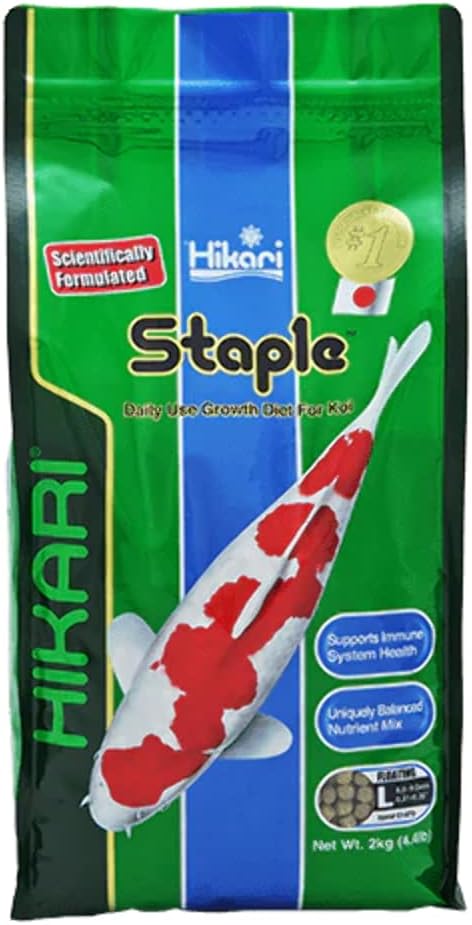
Next up, we have the Hikari Goldfish Staple. These are floating pellets, easy to see and delicious to eat, or so say the fish! Enriched with essential vitamins and minerals, these pellets promise to deliver excellent growth rates and vibrant colors.
Pros: The Hikari Goldfish Staple holds together well, meaning less food waste and tidier aquariums. Also, the floating nature of these pellets caters to the goldfish’s natural feeding style.
Cons: Some “food critics” in the goldfish community find these pellets a little too large, which may pose a difficulty for smaller fish to partake.
Wardley Goldfish Pellets
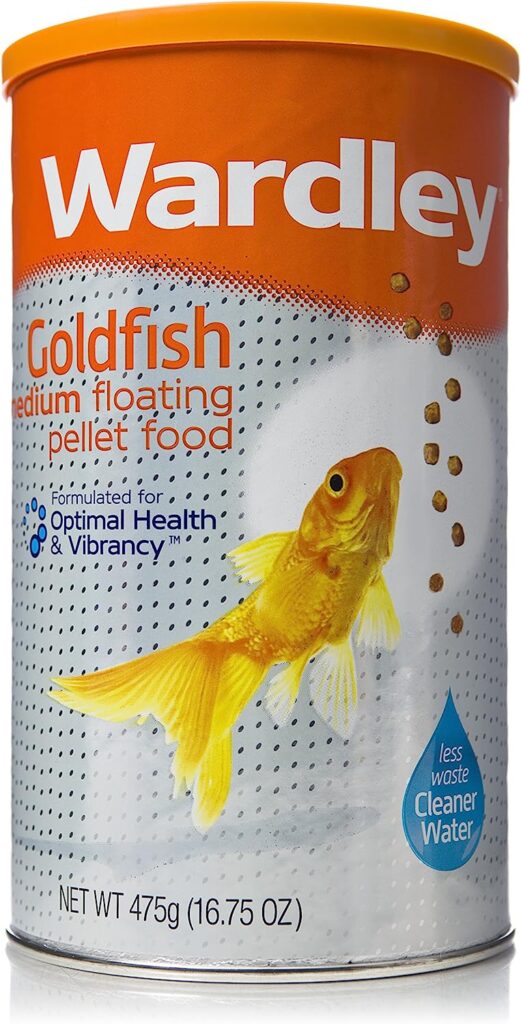
Another worthy candidate in our review line-up is the Wardley Goldfish Pellets. These pellets pride themselves in being low waste, meaning they contribute less to the muck in your aquarium.
Pros: The pellets contain a stabilized form of Vitamin C, which aids in the growth and repair of tissues in your goldfish. Plus, the size of the pellets is small enough, hence catering to all goldfish sizes.
Cons: Some finicky fish types may refuse to eat these pellets—perhaps they fancy a different cuisine!
Repashy Super Gold – Gel Food
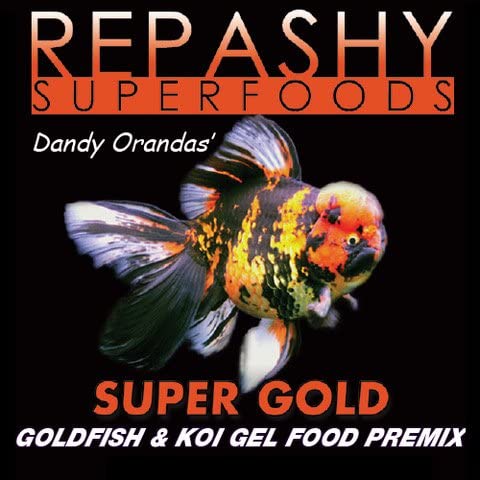
Last but unique, the Repashy Super Gold Gel Food brings a new texture to the table. If your goldfish get bored with the everyday flakes and pellets, here’s a gel food to take the plunge!
Pros: The gel food can be stored in the fridge and lasts longer. It also sinks after a time, allowing your goldfish to chomp at their preferred layer in the aquarium. Also, many goldfish owners have noticed visibly vibrant colors after feeding this gel food.
Cons: The Repashy Gel food does require some preparation effort as these are not ready to use straight from the packet.
So, does your goldfish need a posh buffet or simple home cooking? This ultimately depends on your goldfish’s preferences and dietary needs. Whichever food brand you decide to go with, make sure to observe and adjust as per the responses of your finned friend.
In the upcoming section, we will explore the fine art of feeding your pet goldfish. From determining the right quantity to consequences of overfeeding, we’ll delve into the intriguing details and bring forth critical tips. Remember, food is love, but don’t shower too much of it at a time!
Feeding Your Goldfish the Right Way

We’ve been talking about what types of food goldfish should eat. But now, let’s flip the coin and dial in on the how aspect. Yes, many of us don’t realize that feeding your goldfish involves not just the what, but also figuring out the when and the how much. You know, just like us, goldfish don’t appreciate being stuffed to the brim or starved.
How Much to Feed?
You’re probably thinking, “Isn’t food the way to a goldfish’s heart?” but hold on there, generous soul! The amount of food you feed your goldfish should be just enough to sustain their growth and health, not turn them into watery sumo wrestlers. A good rule of thumb is to feed them an amount they can eat within 2 minutes. Any food left after this is likely excess and can lead to extra waste and tricky aquarium cleaning. Also, try to ensure their diet includes a mix of the foods we discussed earlier.
So, how much? Just enough. Too much of anything, even if it’s love, is not always a good thing. Which brings us to our next point.
When to Feed?

Are we hanging a ‘closed’ sign outside the diner at night or is it open 24/7? Goldfish, like other pets, need a regular feeding routine. This should typically include 2-3 feeding sessions daily. Try to spread the meals evenly throughout the day, making sure not to flake (pun intended) on the timings. Consistency is key—try not to let their little stomachs grumble in anticipation.
Alright, so now we’ve got the How much and When down. But there’s a bit more to this story. We should talk about why it’s important to stick to these guidelines.
The Dangers of Overfeeding
We all share a sorrowful sigh when we see an overfed pooch ambling about, but let’s not forget our gilled friends—overfeeding a goldfish can be equally dangerous, if not more so. Curious tidbit about fish biology here—goldfish don’t have stomachs. Yes, you read that right. No stomachs, meaning they lack the ability to cease eating when they’re full. This unusual trait can lead to some serious health issues like obesity, bloating, and even swim bladder disease if overfed.
And let’s not forget about the tank environment. Any food that isn’t devoured can rot away, leading to a drop in water quality and consequently upping the risk for waterborne illnesses. Overfeeding isn’t just a health hazard—it’s a threat to their home too.
Here’s a mnemonic to remember—merry goldfish aren’t the overfed ones. So, while it might be easy to equate more food with more affection, bear in mind that portion control is the truest love letter you can send to your aquatic amigo.
Automatic Feeders to the Rescue
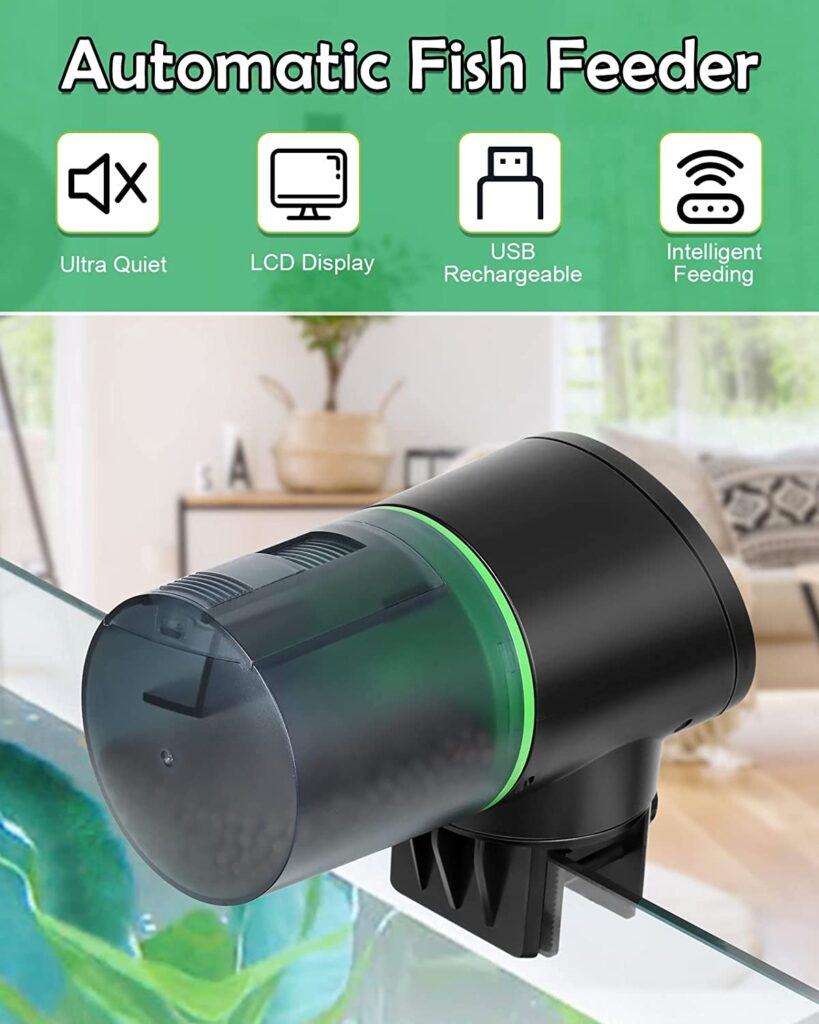
This is where automatic feeders could play a beneficial role in your goldfish’s life. These nifty devices help maintain the appropriate quantity and frequency of meals, ensuring your goldfish gets just enough sustenance without the risk of overfeeding. So, your aquatic pal gets all the nourishment they need without the risk of a food avalanche. In essence, an automatic feeder is like a responsible pet sitter who knows just when and how much to feed your fishy friend.
In summary, understanding and adhering to these feeding guidelines is a critical stride towards ensuring a healthy life for your goldfish—one filled with balanced meals, timely snacks, and the bonus of an automatic feeder ensuring things stay on track.
As we reel ourselves in for the next section, take a moment to ponder—before you risk overfeeding your goldfish, ask yourself, “Would I like to be force-fed beyond my capacity?” Probably not. So, let’s anchor this here and submerge into a recap of what we’ve covered regarding the ideal protein-rich, vibrant, flaked, pelleted, veggie-packed goldfish diet—aided by the precise regulation of an automatic feeder—for your goldfish to live long and prosper. (And by the way, can there ever be too many water-related puns? We think not!)
Final Thoughts
Well, dear reader, we’ve made quite the journey through the gastronomic world of your beloved goldfish. It’s a lot more complex than you may have initially thought, right? From understanding their nutritional needs, to exploring types of food, reviewing top products in the market, and then honing in on the perfect feeding regimen – we’ve covered a lot of ground!
While we’ve learned that TetraFin Goldfish Flakes and Hikari Goldfish Staple are great staples for our finned friends, remember, variety is the spice of life. Incorporate live food like daphnia or brine shrimp, veggies such as peas (sans shell please), and the ever-revolutionary gel food like Repashy Super Gold. Varying food gives your goldfish a wide range of nutrients keeping them healthy, vibrant, and yes, happy!
Let’s not neglect the golden rules of feeding – how much to feed and when. Remember to feed your goldfish only as much as they can consume under two minutes’ time, typically once or twice daily. Keep the dangers of overfeeding at bay. Constipation, poor water quality, fat goldfish…not good.
Recap of the Best Foods for Your Goldfish
Flakes, pellets, live food, veggies, gel food – don’t hold back! Step forth, brave goldfish owner, and step up your goldfish’s dining experience. Ultimately, pick quality products with a balance of protein, fibres, fats, vitamins, and minerals.
Emphasizing on Unique Needs of Your Goldfish
Set the cookie-cutter aside – your goldfish is an individual with unique needs. So, while you feed them like a fish king or queen with the foods we’ve covered, let their specific species, size, and health condition guide your food choices.
Remember, Goldfish are not just pets. They’re friends, companions, maybe even therapists (hey, we aren’t here to judge), and they rely on their human friends for nutritional balance. May your goldfish live a long, healthy, and exuberant life, fuelled by the delectable, nutrient-rich foods you now expertly provide.
Until next time, fellow goldfish enthusiast, keep those fish flapping and more importantly, keep them snacking healthy. And remember, folks, the next time someone tells you your goldfish has a 3-second memory, you inform them that they are critically misinformed and also – they eat better food than Mario the goldfish.
Frequently Asked Questions (FAQ)
Question 1: What does a well-balanced diet for a goldfish include?
Answer: A well-balanced goldfish diet comprises a blend of proteins, carbohydrates, shellfish-derived pigments, and vitamins necessary for their healthy growth. Both dry food (like flakes and pellets) and wet options (like live food and veggies) may be part of this diet.
Question 2: Does the food authenticity affect the goldfish’s memory?
Answer: While a well-rounded goldfish diet does contribute to overall health and wellness, it’s a myth that it directly impacts their memory. Goldfish actually have a fairly decent memory for a fish, irrespective of their diet.
Question 3: How does protein affect a goldfish’s diet?
Answer: Protein is vital for goldfish, promoting growth and enhancing color vividness. Some species require more protein than others, often provided through live food or protein-rich pellets.
Question 4: Should I feed my goldfish only flakes or pellets?
Answer: While flakes and pellets can serve as staples in a goldfish’s diet, they appreciate variety just like us! Introducing live food, vegetables, or gel food ensures they receive a spectrum of nutrients essential for their development.
Question 5: Is feeding live food to my goldfish safe?
Answer: Feeding live food, such as daphnia or tubifex worms, can indeed be beneficial due to their rich protein content. However, sourcing from reputable suppliers is vital, as live food can sometimes carry parasites.
Question 6: How much and how often should I feed my goldfish?
Answer: A general rule is to feed your goldfish as much as they can consume within 2 to 3 minutes, once or twice a day. Overfeeding can lead to complications, including constipation and water contamination.
Question 7: What’s the importance of vegetables in a goldfish diet?
Answer: Vegetables offer essential vitamins and fiber, leading to healthy digestion. Leafy greens, cucumber, or peas make good choices. Remember to cook, de-shell, or finely chop the veggies for easy consumption.
Question 8: Are gel foods a good choice for goldfish?
Answer: Yes, they can be! Gel foods can provide a balanced diet, and their soft texture is gentle on goldfish digestive systems. Plus, you get to play mad scientist while prepping them!
Question 9: Is there a top brand for goldfish food?
Answer: There are numerous brands offering quality goldfish food, like TetraFin, Hikari, and Wardley. However, the “best” food depends on your goldfish’s particular nutritional needs and preferences. It’s recommended you experiment in a controlled manner until you find the perfect fit!

